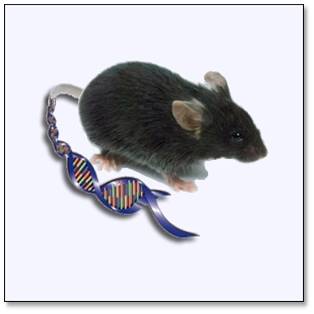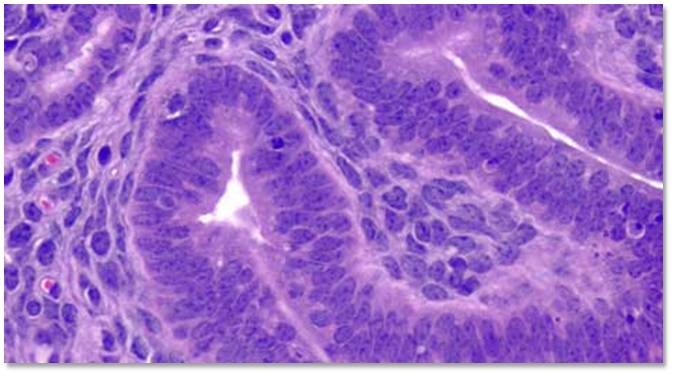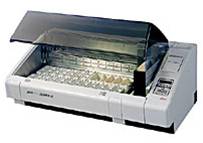



|

|

|
FAQs | Fees | Forms | Contact | Procedures and Tissue Handling
Overview
Our purpose is to provide convenient histology services with the highest quality to researchers.
We perform all standard histology procedures including grossing, processing, embedding, and sectioning of paraffin embedded samples.
We use custom histological procedures, designed to best fit the needs of the research project.
We provide the following services:
We accept the following specimen types:
We offer:
NOTICE: Hazardous or pathogenic tissue samples must be indicated.
What we will need to know
Questions we will ask:
The following questions pertain to frozen sections:
Fees
Please note that these prices are for JHU Cancer Center members. Rates for non-cancer members affliated with JHU are 10% higher. Non-JHU affiliates should send inquiry to Helen Fedor (hfedor@jhmi.edu). Prices are subject to change.
| Grossing |
$3.25 |
| Processing |
$3.25 |
| Special Processing (same day biopsy and cell blocks) |
$20.00 |
| Embedding |
$3.25 |
| Gross, Process, Embed, and
H&E |
$13.50 |
| Re-embed |
$4.84 |
| Decalcificatiion |
$6.05 |
| Unstained Slide |
$3.00 |
| Numbered Serial Sections |
$3.25 |
| Investigator supplied and labelled
unstained |
$2.50 |
| Investigator supplied and labelled
unstained level section |
$2.83 |
| Plus/Poly/Silane Slide |
$0.61 |
| Chemate Slide |
$0.91 |
| Initial/level/recut H&E |
$3.75 |
| H&E on Supplied Labelled Slide |
$3.50 |
| H&E on Supplied Unstained
Section |
$2.00 |
| Additional H&E |
$3.00 |
| Level H&E with Revue |
$4.75 |
| Level H&E on supplied
labeled slide |
$4.25 |
| Level Unstained |
$3.33 |
| Blades |
$2.90 |
| MAS & AFB |
$21.00 |
| Additional MAS & AFB |
$2.00 |
| Initial Frozen Section |
$10.00 |
| Additional Frozen Sections |
$3.75 |
| Hourly Rate For Frozen Sectioning |
$55.00 |
| Hourly Rate For Self Cryostat usage* |
$15.00 |
| Cryostat Instruction |
$10.00 |
| Box of "+" slides |
$18.00 |
| Tissue Block Coring for Molecular
Studies (up to 5 cores/block) |
$6.26 |
| Tissue Block Coring for Molecular
Studies (6-30 cores/block) |
$10.00 |
| Slide Folder |
$7.50 |
| Slide Box 100 |
$10.00 |
| Slide Box 25 |
$5.00 |
| Slide Mailer |
$0.50 |
| Cardboard Slide Box |
$2.00 |
| Block pickup and return fee |
$25.00 |
| Hourly Rate |
$50.00 |
| Priority Rush |
50% upcharge |
| Standard Rush |
20% upcharge |
* = Cryostat usage must be cleared by Bonnie Gambichler. All cryostat users must be "checked out" after using the cryostat to confirm it is clean and in appropriate working order. Note - cryostat blades are very sharp!
Back to topForms
Contact
Location: Bond St Annex, Room 305 Basement
For inquiries, please contact:
Bonnie Gambichler
Email: bgambic1@jhmi.edu
Phone 410-502-3358
Personnel:
Animal Tissue Processing
Fixation:
Size:
Tissues placed in the tissue cassettes should be no thicker than 3-4mm. If placing more than one piece in a cassette they should be of relatively similar size. Do not place 2 organs together in the same cassette that are different sizes - ex . Do not put mouse liver with mouse prostate lobes. If the tumor or organ is thicker than 3-4mm or proportionately larger than other pieces going into the same cassette - slice it into thinner pieces to create tissues with a similar thickness. Some space should remain between the tissue and cassette walls, i.e. it should not be stuffed full . This helps to assure the tissues are processed uniformly.
Lens Paper:
Some smaller tissues need to be wrapped in lens paper to assure they will not fall out of the cassette during processing: prostate lobes and lymph nodes (if necessary).
There is a special technique to folding the Lens paper -- Please watch our YouTube Videos below or see Bonnie for directions .
Lens paper folding demonstration with a large piece of paper
Lens paper folding demonstration with actual lens paper
Requesting H&E and unstained sections
Following the initial processing of the block, request 1 H&E for each block submitted.
More cuts of each block should only be requested if the initial H&E has been reviewed and the tissue appears well fixed and suitable for the staining or further experimentation. - This helps cut costs, assures that slides and precious tissue do not get wasted and also cuts down on storage of unstained sections in the -20. Some antigens degrade over time so it is best to cut only what you need when you need it.
Do not prebake the slides -- this is to be done as the first step of IHC. This helps to preserve the antigenicity of the tissues.
Storage:
Blocks: room temperature or 4oC -- avoid heat, direct sunlight and dust.
Unstained sections: -20oC in a Ziploc bag or wrapped in parafilm to avoid condensation.
Tissue Handling Procedures
There is no one size fits all method of tissue preservation to handle all experimental designs. Before harvesting tissue you need to assess your experimental design to best fit the fixation method to the procedure being use to preserve the tissue. Four general procedures exist; snap freezing, OCT media embedding, RNA stabilizing reagent, or fixative. Here are some general guidelines to help give the best quality of tissue preservation and fixation.